Santorini Beyond the Crowds: What to See and...
Discover hidden beaches, authentic tavernas, ancient...
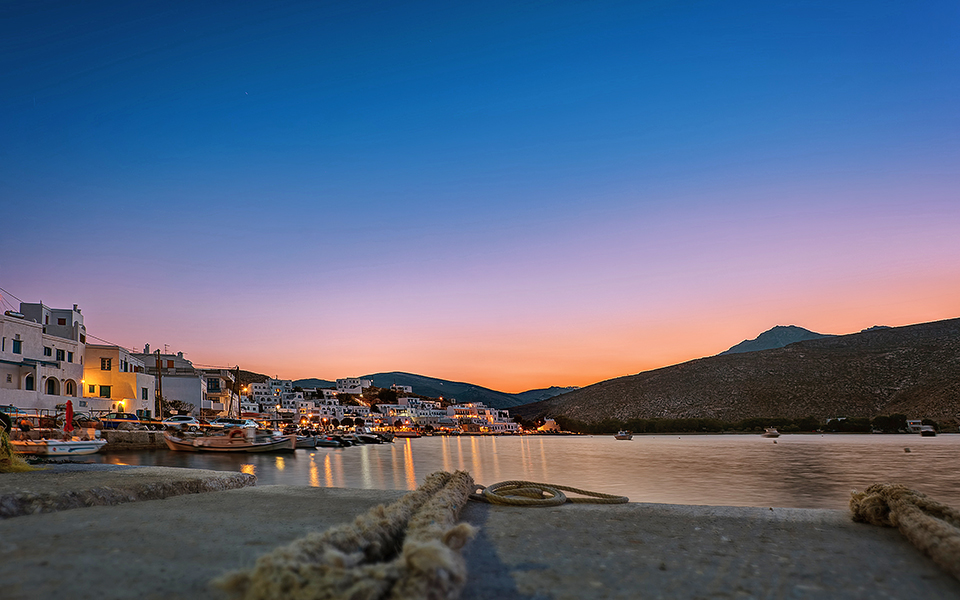
Pigeon houses, whitewashed houses and charming traditional villages make Tinos a delight to visit
© Shutterstock
Possessing a long Italian tradition, as, in the past, the island was ruled by the Republic of Venice, Tinos is a Cyclades island filled with delights and treasures. Ornate pigeon houses, numerous traditional villages, alluring beaches, gourmet banquets, music festivals and art gatherings all make up the character of this Aegean island featuring white-marble beauty and unique ways.
The traditional villages of Tinos make the island stand out among other Cyclades islands. Exploring the numerous Tinian villages, some of which are Greek Orthodox and others Roman Catholic, unveils a world of elegant arches, cobbled paths, chapels and white houses, joined wall to wall. Villages worth visiting include Loutra, where Jesuit and Ursuline monasteries are located; Kardiani; Dyo Horia, for its gorgeous squares; abandoned Monastiria, a stone-built village which, despite its deserted look, carries aged charm; Triantaros; Arnados; Tarabados; Myrsini; tiny Krokos; Komi, boasting a marvelous women’s choir; Koumaros, featuring a self-service café where visitors make their own coffee; and, naturally, Pyrgos, a very impressive village in the island’s northwest. Apart from its authentic white beauty, Pyrgos is also renowned as the homeland of modern Greece’s most celebrated sculptor Giannoulis Halepas (1851-1938), whose compositions, made using marble, clay and copper, add up to an unrivalled body of work.
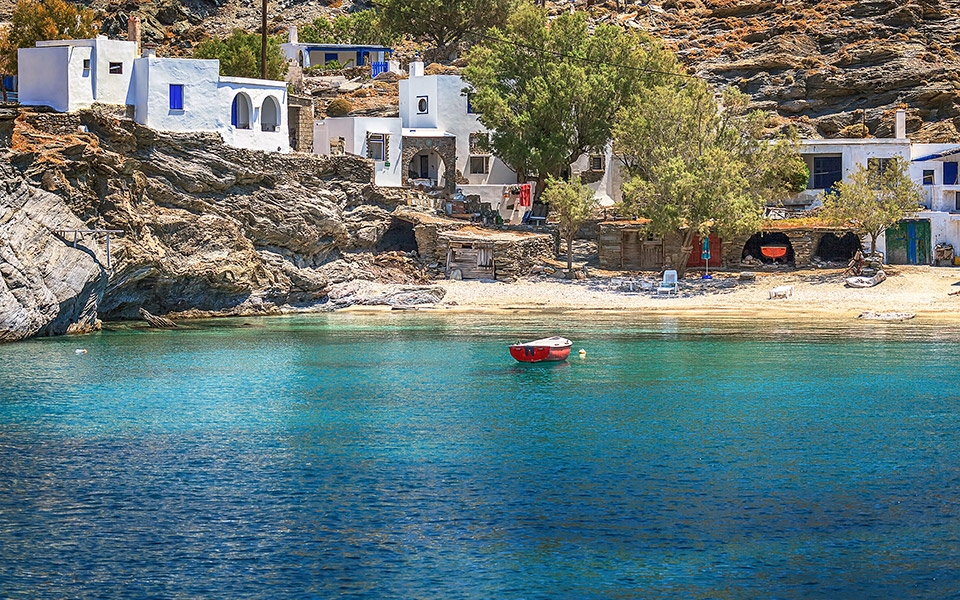
Mali village, one of the many quaint little villages that draw visitors to this island
© Shutterstock
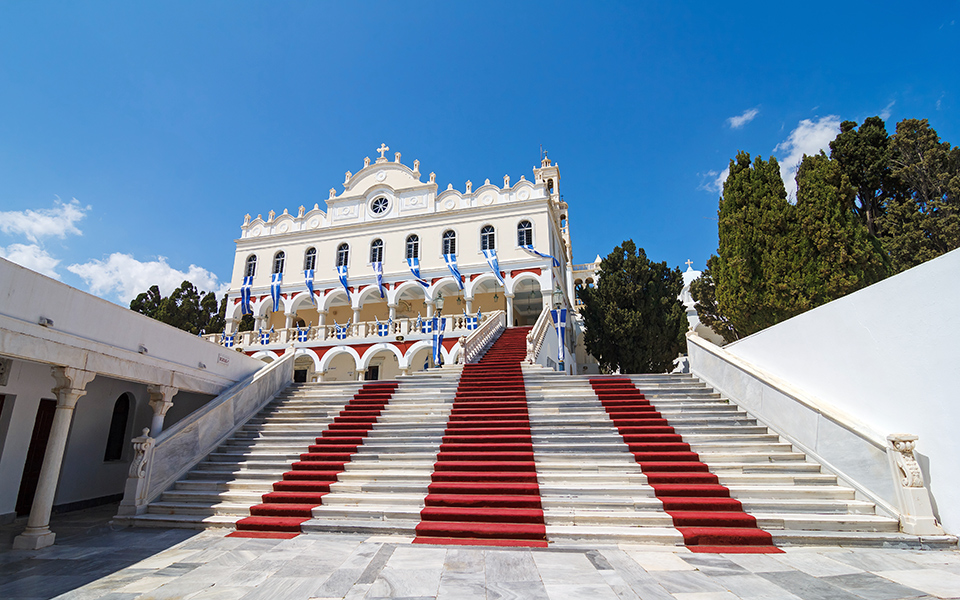
Evangelistria church, home to a revered icon of the Virgin Mary
© Shutterstock
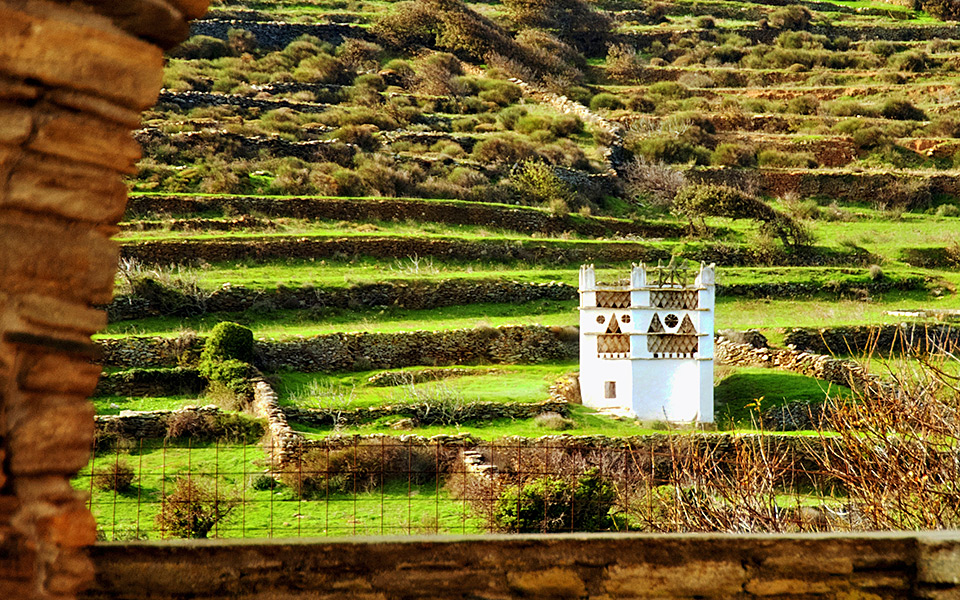
One of the island's many ornate pigeon houses
© Evelyn Foskolou
Chora, the island’s main town, is located next to the port and is usually the first place visitors become acquainted with when setting foot on the island. Visiting the Evangelistria church, where a nationally revered icon of the Virgin Mary is kept, is a standard choice. Visitors on the island during the mid-August period, when the Assumption of Mary is celebrated on August 15, can expect to see scores of pilgrims from all over Greece heading up the road that leads to the church on their knees. This custom is performed as an expression of gratitude for wishes made by worshippers through oblations (tama) offered.
Folk art enthusiasts definitely need to visit the Marble Art Museum, located just beyond Pyrgos and dedicated to the local history of marble, the material’s influence on the island, the challenges faced by marble artists, and the achievements of Tinian craftsmen over the years. It is also worth visiting the Tinos Cultural Foundation in the main town to see a permanent exhibition dedicated to Halepas, the island’s master sculptor, as well as the Costas Tsoklis Museum in Kambos. This museum is housed at the village’s old school and features work by Tsoklis, a contemporary artist who has been based on Tinos for years. Besides the museums, the Tinian landscape features many pigeon houses, charming constructions believed to date back to Venetian times. They stand as important examples of local architecture. The island’s Tarabados valley is renowned for its pigeon houses.
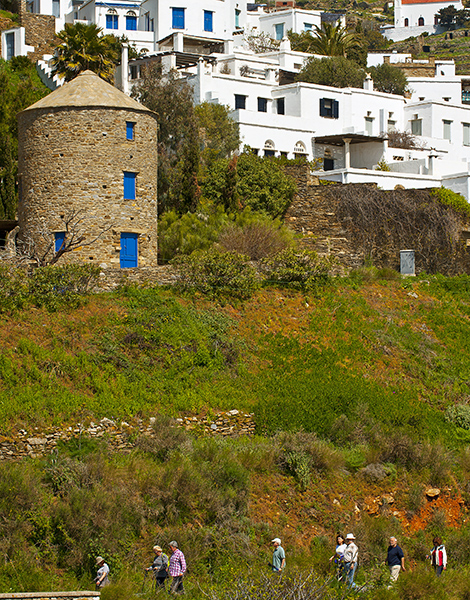
The picturesque village of Berdemiaros
© Clairy Moustafellou
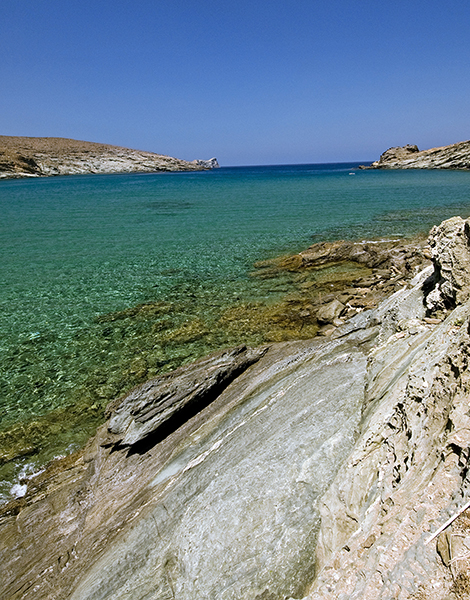
When done sightseeing, head to one of the beaches such as Kolibithra beach to relax
© Clairy Moustafellou
Tinos, the fourth largest of the Cyclades by area, offers numerous swimming options. Kolybithra, one of the island’s most renowned beaches, attracts water sport enthusiasts. Surfing lessons are offered at this beach. It is also worth considering Pahia Ammo, Livada, Agios Fokas, Kionia, Aghios Sostis, Laouti, also known as Skyladar, Aghios Ioannis Porto, Lyhnaftia, Ormos Giannakis, Kalyvia and Aghios Petros. Checking weather reports before heading off is strongly advised as beaches where conditions are windy are not recommended for swimming or sunbathing.
Numerous events are staged on the island, including the Tinos Marble Trail mountain running race; gastronomy festivals such as the artichoke feast (Giorti tis Aginaras), celebrating artichoke-based recipes; Tinos Food Paths; various other cultural events, such as the Tinos World Music Festival ; Curiosity, a group exhibition that attracts artists from all over the world; the Tinos Festival, covering all the arts; Kyklos Kykladon, a festival held on four Cyclades, one of these being Tinos; and kinono_1, an art gathering embracing the visual arts, music, dance, theatre and film.
Tinos can be reached by ferryboat and flying dolphin. Numerous ferryboats run daily from Rafina port, roughly 25km east of central Athens (4 hours/approximately 27 euros, return). Flying dolphins also embark from Rafina (2 hours/25-50 euros). From Piraeus, the Greek capital’s main port, routes are less frequent (4½ hours, 26 euros).
Discover hidden beaches, authentic tavernas, ancient...
Discover Greece’s islands in September with...
On the Cycladic island of Tinos,...
Discover festivals, beaches, food, and hidden...